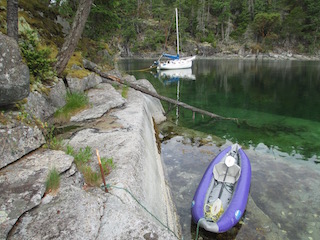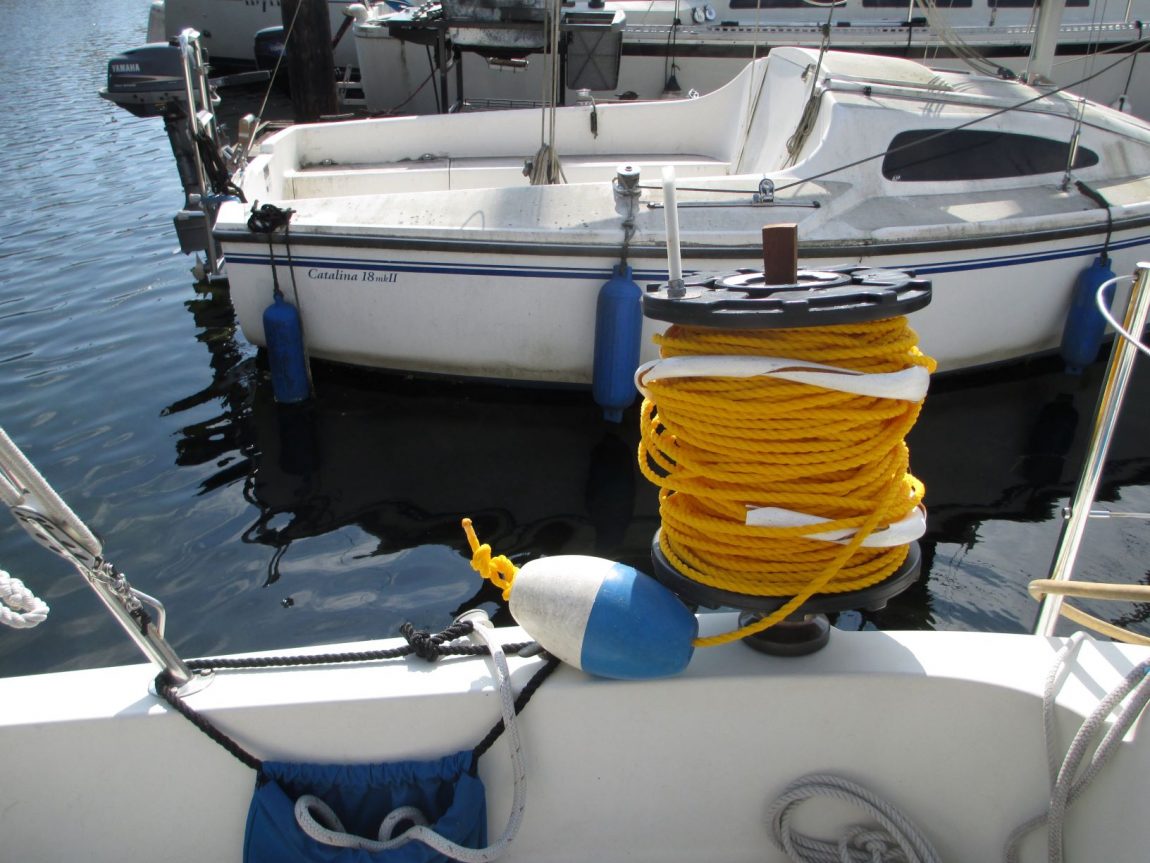
The Resourceful Sailor Shares His Stern-Tie Tips
The Resourceful Sailor wrote to us this week to let us know that he’s been busy hauling and fitting out his Flicka 20, Sampaguita. Hopefully this means he’s gathering lots of interesting and useful tips to share with us in the future. In the meantime, the MacGyvering legend sent us the first RSS piece that he wrote — in 2019. We’re sharing it with you as we loved the ingenuity that went into his stern-tie setup. Please note: As this article is a little longer than usual, we’ve included only the first section, with the remainder linked at the bottom of the page.
“How do you run a stern-tie setup when you have limited working and storage space on board?” This is one of the questions I asked myself in fitting out my Flicka 20 Sampaguita for Pacific Northwest expeditions. First, I’ll address what a stern-tie is, why you might need one, and the equipment involved. Second, I’ll review the specific issues I faced as a small-boat owner and how I personally solved those challenges. Third, I’ll discuss how this solution and its variables work for Sampaguita in real-world practice.
A stern-tie is a line leading from the stern of a boat to an object on shore. This could be a tree, a rock, or a piling. In Washington State Parks and British Columbia Provincial Parks, you will often find rings, chains or posts installed for this purpose. When used in conjunction with a bow anchor, the line holds a boat in a particular place or aids in the security of the bow anchor.
In the Pacific Northwest, there are many beautiful coves and inlets to attract you to anchor for the night. Sometimes you need a place to wait for the weather or a tidal rapid to settle. You might have run out of navigable light, or are too exhausted to sail on. Once in the anchorage, the seabed may have a steep sloping bottom or be of poor holding ground for the anchor. Sometimes there is limited room because of rocks or other boats in your swing circle, and in some anchorages, it is just considered polite to reduce your swinging radius to leave room for later arrivals. So, you see, a stern-tie setup can be necessary for safety, security, and etiquette.

I will limit the equipment focus to only the stern-tie setup, including the line, a reel, and chafe protection. The materials used and the working and storage space will be considered. Not included are the bow anchor and the tender. While both are necessary for stern tying, they will serve you in other situations and are considered prerequisite acquisitions. Each presents problem-solving challenges that could be articles of their own.
In the search for my own stern-tie solution, my first step was to purchase 300 feet of 3/8”, 3-strand yellow polypropylene rope. This would give me an adequate length to lead to shore and then back to the boat. An advantage of going in a full circle like this is that polypropylene line hitches on the cleat better than it ties into knots. However, the biggest reason is that when departing there is no need to leave the boat to untie the line. Just release the line from the cleat and reel it in.

I chose 3/8” diameter line because this size would provide adequate strength for my anticipated loads, and 3-strand because of its lower cost. The choice of yellow, and polypropylene, was due to safety. The yellow would provide high visibility so other boaters would see it. Polypropylene, because it floats, aids visibility, and offers the best property to avoid accidentally wrapping the line around my outboard’s propeller.
The crux of the working and storage space consideration is the reel. On my Flicka, the rudder is transom-hung and occupies the midsection of the transom. The outboard engine is mounted to port of the rudder. To starboard, hung on the stern rail, is the propane tank. The stern light is also located here. On a Flicka, the mainsheet traveler is the stern rail, and Sampaguita has dual backstays. Furthermore, I stow my fenders on the starboard rail and my stern anchor and reserve fuel on the port side. With all this other necessary gear, there is not much room for a permanent, traditional-style line reel.
